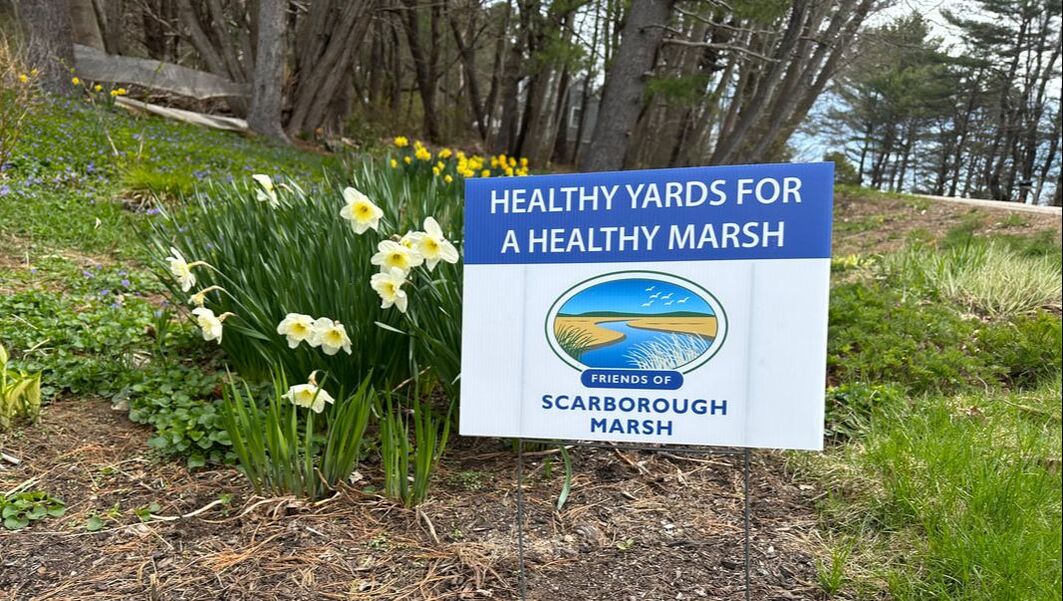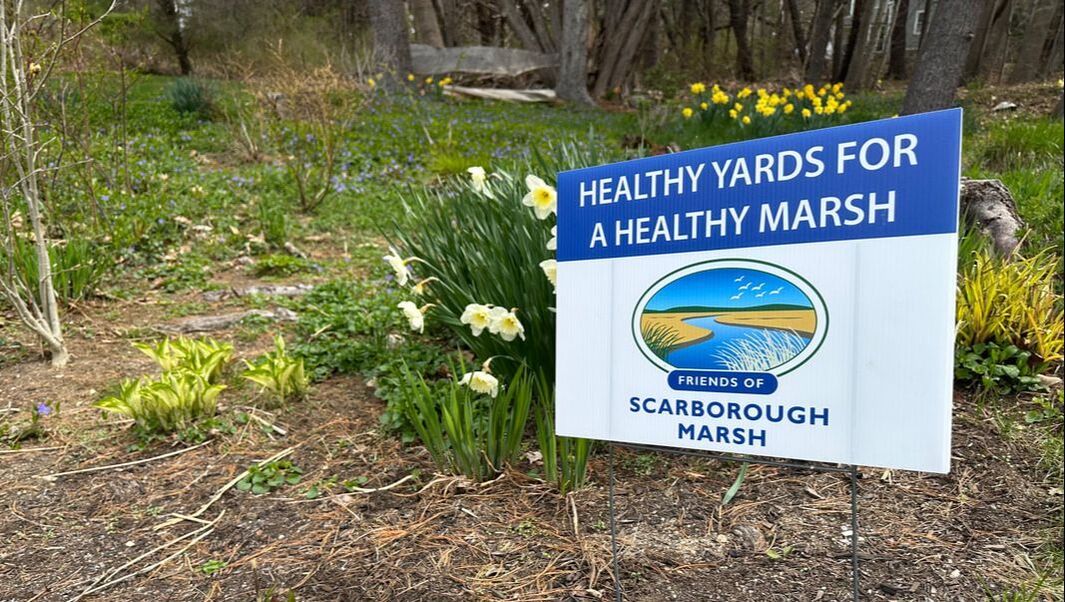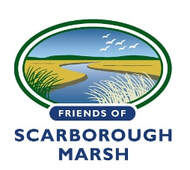
HEALTHY YARDS FOR A HEALTHY MARSH
Lawn fertilizers and insecticides can end up in our marsh,
harming our shellfish and fishing industry as well as our own,
our children's and our pets’ health.
Use chemicals and pesticides sparingly.
Lawn fertilizers and insecticides can end up in our marsh,
harming our shellfish and fishing industry as well as our own,
our children's and our pets’ health.
Use chemicals and pesticides sparingly.
MOW HIGH, SEED WELL, LEAVE THE CLIPPINGS
TEST YOUR SOIL
WATER WISELY and INFREQUENTLY
USE CHEMICALS AND PESTICIDES SPARINGLY
LAWN ALTERNATIVES
It also helps to pick up pet waste and keep your septic sanitary system up to date and leak free to protect the marsh.
Find more ways to help the marsh.
- Growing your lawn a bit longer by setting mower blades at 3-4 inches high can make a big difference to the health of your lawn. This can promote more vigorous root growth and shade out weeds.
- Leave the grass clippings for free lawn fertilizer.
- Overseed your lawn with plenty of grass seed in spring and fall to keep it thick.
- Mow in the early evening after the heat of the day and vary your mowing pattern to avoid compacting the soil.
- Aerating overly compacted soil can improve lawn health.
- Make sure your mower blades are sharp and can cut grass cleanly, rather than tearing and damaging the grass.
TEST YOUR SOIL
- Get your soil tested inexpensively to avoid over fertilizing.
- Applying fertilizers in the fall between late August and Columbus Day is the best time and be sure to apply when rain isn’t predicted for 24 hours.
- Add clover to your lawn to help it make its own fertilizing nitrogen. Use your lawn mower to mulch leaves on your lawn, rather than leaf blowing or raking, for more free fertilizer.
WATER WISELY and INFREQUENTLY
- Water once or twice a week, depending on rainfall, to achieve 1 to 1.5 inches weekly. A rain gauge can help. Deep infrequent watering in mornings encourages better root growth.
- Water in the morning before 10 AM to allow water to soak into the ground. Watering at night may cause fungal diseases of the grass.
USE CHEMICALS AND PESTICIDES SPARINGLY
- Go to the Scarborough Town website for the Pest Management Advisory Committee recommendations to keep your children, pets and the marsh safe.
LAWN ALTERNATIVES
- Look for alternatives to grass on some lawn and garden sections. Avoid invasive plants and choose your plants wisely to attract pollinators and birds. See Maine Audubon’s Native Plant Finder
It also helps to pick up pet waste and keep your septic sanitary system up to date and leak free to protect the marsh.
Find more ways to help the marsh.
|
Start your own steps toward a healthy lawn and join the Friends of the Scarborough Marsh in protecting our yards, families, and our marsh. Request your lawn sign Healthy Yards for a Healthy Marsh to show you care, and we’ll deliver one to your lawn in the spring to help spread the word.
EMAIL US: https://scarboroughlandtrust.org/contact |
|

